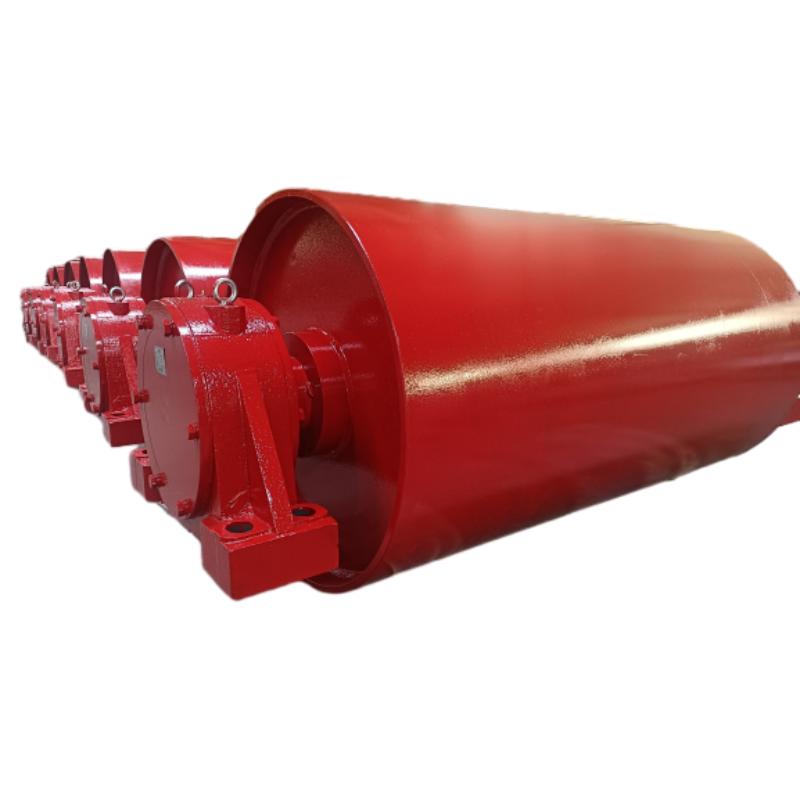Bend Pulley for Conveyors – Durable, Precision, OEM Supply
Bend Pulley (Non-driving Pulley): field notes, specs, and what actually matters
If you handle bulk materials for a living, you already know the quiet importance of a bend pulley. It doesn’t shout like a drive drum; it changes the belt’s direction, tightens the line, and quietly prevents headaches. Actually, the non-driving shaft that doesn’t extend out both sides is deliberate engineering, not an omission. The better ones are checked by finite element analysis (FEA) to keep stress under control and fatigue at bay.

What’s trending in conveyor pulleys
Three shifts I keep seeing: ceramic-lagged surfaces for wet plants, tighter dynamic balancing (G6.3 becoming the default), and traceable QA. Many customers say they’re willing to pay a little more if it means fewer belt mistracks and longer bearing life. To be honest, that’s rational economics.
Core applications
- Quarries and aggregates, especially on return or take-up stations
- Coal handling and power plants (corrosion-resistant lagging helps)
- Cement, ports, grain terminals, steelworks—anywhere belts need angle changes

Product snapshot and specs
Bend pulley origin: East Outer Ring Road, Yanshan County, Cangzhou City, Hebei Province, China. Below is a typical configuration—real-world use may vary by site and duty.
| Parameter | Typical Spec (≈) |
|---|---|
| Diameter | 220–1600 mm |
| Face width | Belt width + 100–200 mm |
| Shell material | Q235B / Q345B steel (others on request) |
| Lagging | Bare steel, hot-vulcanized rubber, or ceramic tiles |
| Balance grade | ISO 1940-1 G6.3 (G2.5 on request) |
| Runout | ≤ 0.3 mm (typical) |
| Testing | UT welds, hardness, dynamic balance, coating adhesion |
| Design method | Finite Element Analysis (FEA) for drum & discs |
| Service life | ≈ 5–10 years, duty-dependent |
Process flow that actually works
- Materials: rolled steel shell, forged hubs/discs, high-grade bearings.
- Methods: submerged-arc welds, stress relief, precision machining, lagging (rubber/ceramic).
- Testing: UT per ASTM A388 (or equivalent), balance per ISO 1940-1, vibration check (ISO 10816), coating per ASTM D3359.
- Final QA: runout and concentricity, bearing fit, paint DFT.

Vendor snapshot (realistically speaking)
| Vendor | Lead Time | Customization | Certs | Notes |
|---|---|---|---|---|
| Manufacturer at Cangzhou, Hebei | ≈ 2–4 weeks | FEA, ceramic/rubber, special widths | ISO 9001, CE (on request) | Good documentation trail |
| Typical Trader | 3–6 weeks | Limited drawing changes | Varies | Price-first, mixed QA |
| Local Fabricator | 1–3 weeks | High—if you share drawings | Shop-level | Great for urgent spares |
Real-world results and feedback
In a limestone quarry retrofit, swapping to ceramic-lagged bend pulley reduced belt carryback and cut tracking interventions by ~40% over 6 months. Vibration at the pulley dropped to 1.6–2.0 mm/s RMS (ISO 10816 within comfort range). A plant manager told me, “Surprisingly boring—in a good way.” That’s the point.
Customization checklist
- Diameter/face width to DIN 22101/CEMA calcs
- Lagging pattern: plain, diamond, ceramic mosaic
- Sealing for dust/water; paint systems for coastal sites
- Balance grade G2.5 for high-speed belts
Standards touchpoints: CEMA belt design guidelines, DIN 22101 sizing, ISO 1940-1 balance, ISO 10816 vibration. Compliance isn’t marketing—it’s uptime [1–4].
Authoritative citations
-
Impact Roller for Belt Conveyor – Durable Solutions for IndustryNewsNov.24,2025
-
Rubber Conveyor Rollers – Quiet, Durable, Sealed BearingsNewsNov.24,2025
-
Industrial Conveyor Belt Rollers: Durable Solutions for Harsh EnvironmentsNewsNov.24,2025
-
Idler Rollers for Belt Conveyors | Durable, Low-Noise OEMNewsNov.24,2025
-
Durable Rubber Conveyor Belt Rollers for Industrial UseNewsNov.24,2025
-
Ceramic Lagging Conveyor Pulley – Anti-Slip, Wear-ResistantNewsNov.17,2025






























